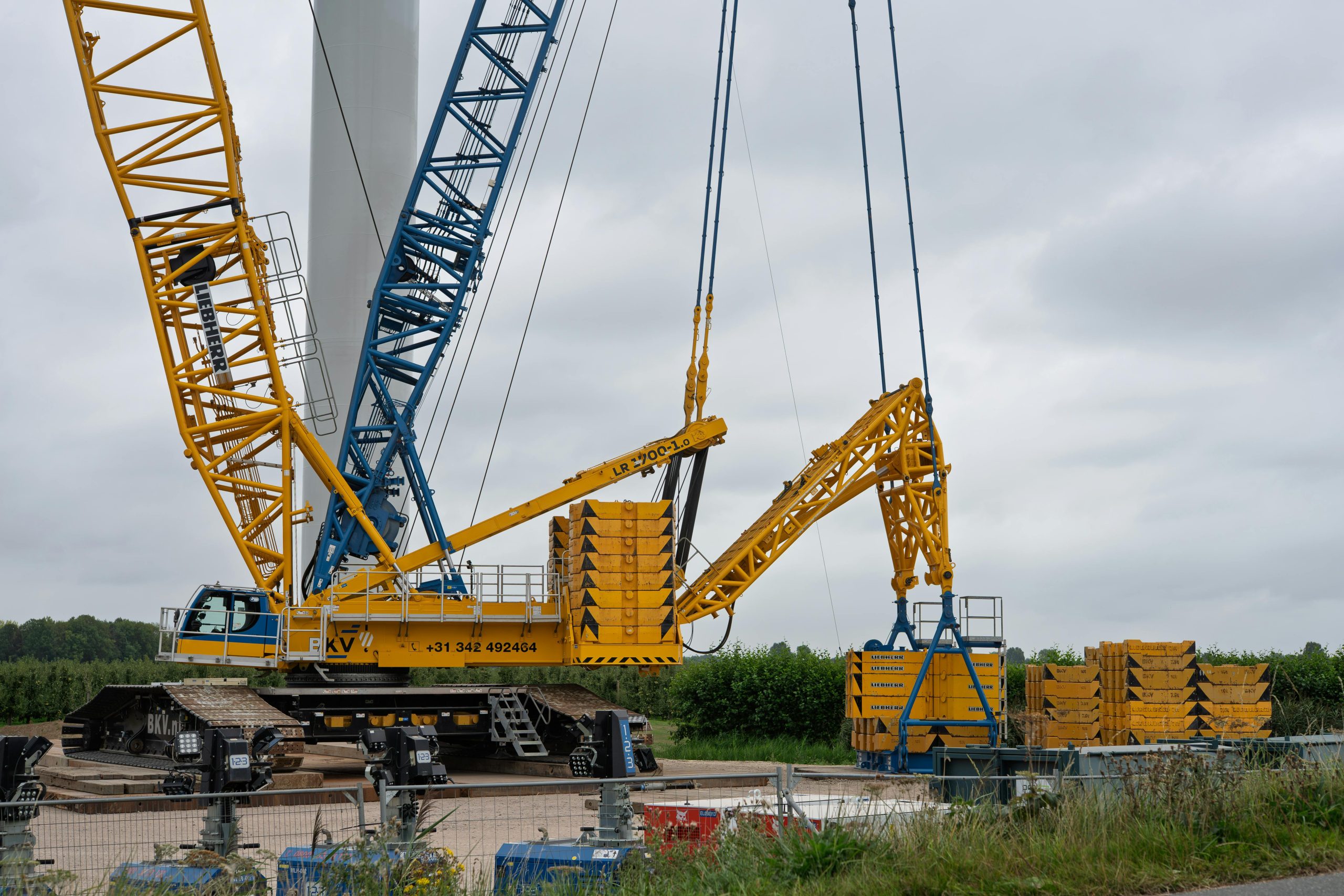Industrial lifting accidents cost companies over $15 billion annually in the United States alone, according to 2025 OSHA data. How can your organization protect both personnel and productivity while ensuring operational excellence? Smithwick Engineering delivers comprehensive lifting operation solutions that prioritize safety while optimizing costs and schedules across multiple industries. Their expertise transforms complex hoisting challenges into reliable, engineered solutions that protect lives and enhance operational performance.
Comprehensive Service Portfolio for Multi-Industry Applications
Modern lifting engineering demands industry-specific expertise to meet the unique challenges of each sector. Whether you operate in shipbuilding, energy, or heavy manufacturing, each environment presents unique technical constraints that require tailored engineering solutions.
Also to read : Transform your career through effective public sector recruitment
Specialized engineering services cover the entire industrial spectrum, from preliminary load analysis to the design of customized equipment. In the oil and gas sector, for example, solutions incorporate resistance to corrosive environments and ATEX standards. For the marine industry, the focus is on dynamic stability and movement constraints at sea.
This multi-industry approach enables the development of lifting methods optimized for specific operational requirements. Engineers adapt their recommendations to space constraints, industry-specific safety requirements, and each client’s productivity objectives, ensuring seamless integration into existing processes.
Topic to read : Expert solutions for seamless international removals
How Safety Standards Transform Operational Reliability
Modern safety standards serve as the foundation for operational excellence in lifting operations. These rigorous protocols establish clear benchmarks that transform how equipment performs under real-world conditions, creating measurable improvements in both reliability and personnel protection.
The evaluation process begins with comprehensive risk assessments that examine every aspect of lifting operations. Engineers conduct detailed inspections of equipment condition, load calculations, and environmental factors. This systematic approach identifies potential failure points before they compromise operational safety, allowing for proactive maintenance strategies that extend equipment lifespan.
Implementation of recognized industry standards creates a framework for consistent performance across diverse operational environments. These standards address critical factors including load limits, inspection frequencies, and operator training requirements. When properly applied, they reduce equipment downtime by up to 40% while significantly lowering the risk of workplace accidents.
The impact on personnel protection becomes evident through reduced incident rates and improved operational confidence. Workers operating under established safety protocols demonstrate higher productivity levels and greater attention to detail. This creates a positive feedback loop where safety consciousness drives operational excellence, ultimately benefiting both human resources and business outcomes.
Key Selection Criteria for Load Securement Specialists
Selecting the right load securement specialist can mean the difference between operational success and costly failures. The complexity of modern lifting operations demands expertise that goes beyond basic equipment knowledge.
When evaluating potential specialists, focus on these essential criteria to ensure you’re making an informed decision:
- Industry certifications from recognized bodies like ASME, OSHA, or equivalent international standards
- Proven track record in your specific industry sector with verifiable project references
- Comprehensive insurance coverage including professional liability and equipment protection
- Emergency response capabilities and 24/7 support availability
- Detailed documentation processes for all inspections and recommendations
- Ongoing training programs to stay current with evolving safety regulations
- Equipment testing facilities and calibrated instrumentation for accurate assessments
The specialist’s approach to safety documentation reveals their professionalism. Look for detailed reports, clear communication protocols, and transparent pricing structures. A quality specialist will also provide ongoing support rather than one-time consultations, ensuring your operations maintain peak safety standards.
Cost Optimization and Schedule Benefits in Hoisting Projects
Professional hoisting operations deliver measurable financial advantages that extend far beyond initial project costs. When engineering expertise drives planning and execution, organizations typically see 15-25% cost reductions compared to ad-hoc approaches, primarily through eliminated delays and equipment optimization.
The foundation of cost control lies in precise load calculations and equipment selection. Expert engineers identify the exact lifting capacity needed, preventing over-specification that inflates rental costs while ensuring adequate safety margins. This technical precision eliminates costly mid-project equipment changes and reduces operational downtime.
Schedule adherence becomes achievable through comprehensive risk assessment and contingency planning. Professional teams anticipate potential challenges before they materialize, maintaining project momentum where inexperienced operators often face unexpected delays. Weather windows, site access limitations, and coordination with other trades receive detailed attention during the planning phase.
Equipment reliability represents another significant cost factor. Professional operators conduct thorough pre-operation inspections and maintenance protocols, dramatically reducing the likelihood of mechanical failures that can halt entire projects. This proactive approach protects both equipment investments and project timelines, delivering consistent results that support long-term operational success.
Competitive Advantages in Modern Lifting Engineering
The lifting engineering landscape has evolved dramatically, with success increasingly determined by three critical differentiators: technological innovation, continuous workforce development, and unwavering commitment to operational reliability. Companies that excel in these areas consistently outperform competitors in both safety outcomes and project efficiency.
Advanced engineering firms leverage cutting-edge modeling software and predictive analytics to optimize lifting operations before equipment ever reaches the jobsite. This technological foundation enables precise load calculations and risk assessments that traditional approaches simply cannot match. The integration of real-time monitoring systems further enhances operational visibility, allowing engineers to make informed decisions throughout complex lifting sequences.
Continuous training programs represent another significant competitive advantage. The most successful lifting engineering specialists maintain rigorous certification standards and invest heavily in ongoing education for their teams. This commitment ensures that engineers stay current with evolving industry standards, emerging technologies, and best practices that directly impact project safety and efficiency.
Perhaps most importantly, leading firms distinguish themselves through their systematic approach to reliability optimization. Rather than merely meeting minimum safety requirements, these organizations proactively identify potential failure points and implement comprehensive mitigation strategies that protect both personnel and equipment while maintaining project schedules.
Frequently Asked Questions about Specialized Lifting Services
Industrial lifting professionals regularly ask us questions about optimizing their operations. Here are the answers to the most common questions regarding our specialized engineering services.What services does Smithwick Engineering provide for lifting operations?
We offer comprehensive engineering studies, equipment reliability analysis, lifting procedure optimization, and technical support to maximize operational safety.
How can Smithwick Engineering improve the safety of our hoisting equipment?
Our approach combines in-depth technical audits, targeted improvement recommendations, and team training to significantly reduce the risk of incidents during handling operations.
What industries does Smithwick Engineering work with for load securement?
We operate in multiple industrial sectors: petrochemicals, shipbuilding, energy, heavy manufacturing, and infrastructure, adapting our solutions to the specificities of each environment.
How much does it cost to hire Smithwick Engineering for lifting consultancy?
Pricing depends on the complexity of the project and specific requirements. We offer personalized quotes after an initial assessment to ensure a service tailored to your budget.
What makes Smithwick Engineering different from other lifting operation specialists?
Our primary focus on human safety, combined with multi-industry expertise and a cost-time optimization approach, sets us apart from other providers in the sector.










